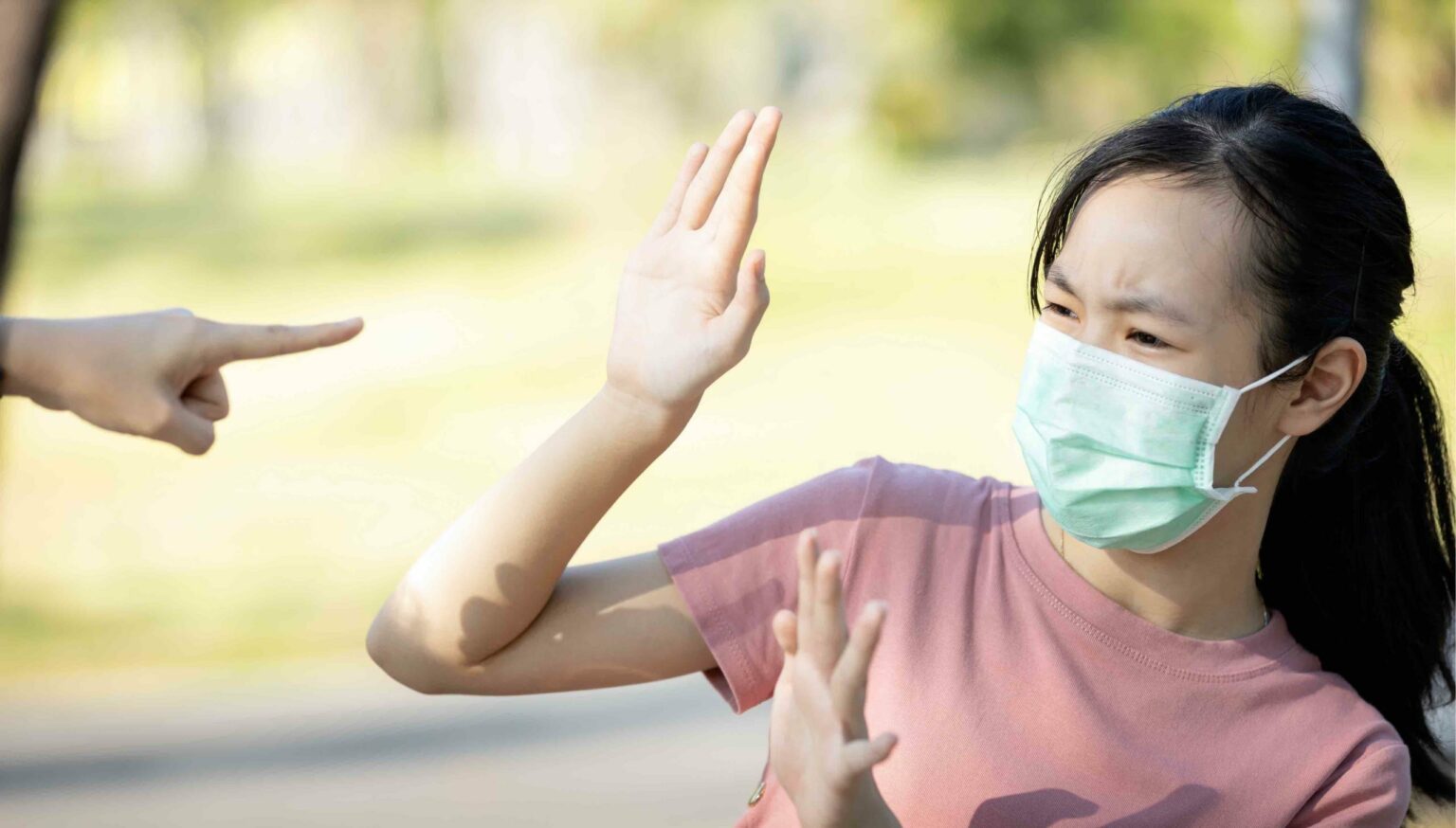Going back to school during the COVID-19 pandemic is complicated enough. The crisis has changed a lot in education and brought many social issues into a new light. Unfortunately, 2020 has also seen a rise in certain types of bullying.
Bullying of Asian-American Students
Asian-American students across the nation have reported incidents of being mistreated, mocked, and shunned. Before public schools were closed, many Asian American students were taunted and blamed for the virus.
Coronavirus bullying of Asian American students has continued on and offline. During a second grade Zoom class in Orange County, CA, a boy said “I don’t like China or Chinese people because they started this quarantine.” A Chinese American girl in the class wrote a handwritten note, which her mother posted on Facebook: “This made me feel sad because he’s my friend and I’m Chinese. When you say that you don’t like Chinese people, you’re saying that you do not like me. I did not start this virus. Thank you for being my friend.”
In a more extreme case, a 16-year-old California boy ended up in the hospital after bullies accused him of having the coronavirus and physically attacked him.
Calling COVID-19 the “Chinese virus,” “Kung Flu” or “Wu Flu” can increase anti-Asian bias. It’s important to consider how different families may be talking at home about the pandemic, and how this impacts attitudes toward other students.
Given the hostile climate, the national civil rights organization OCA – Asian Pacific American Advocates has urged schools to “prevent further bullying and harassment of AAPI students rooted in racism and misinformation about coronavirus.” Due to escalated Anti-Asian school bullying, the Anti-Defamation League has created a lesson plan for middle and high school to prevent and spread awareness about racism.
To combat anti-Asian bullying, it’s important to:
- Teach students to respect students of all races and to counter misinformation about the racist stereotypes spread during this pandemic
- Call out race-based jokes about the virus, which are hurtful and create an environment where racist attitudes and behaviors are accepted.
- Inform parents and students about their rights. Record the specific facts, witnesses, any photos, and indicate if there was slander or physical contact. An official bullying report should be submitted as soon as possible to the school district, so an investigation can be started and safeguards can be put in place.
Mask Bullying
As students return to in-person learning, many are required to wear a mask to prevent the spread of the coronavirus. Mask bullying — bullying based on whether or not someone wears a mask– is an unintended consequence of returning to school during the coronavirus pandemic.
The Center for Disease Control and Prevention’s website states “stigma, discrimination, or bullying may arise due to wearing or not wearing a cloth face covering. Schools should have a plan to prevent and address harmful or inappropriate behavior. Not all families will agree with school policies about cloth face coverings. Schools should have a plan to address challenges that may arise and refer parents, caregivers, and guardians to CDC’s guidance on cloth face coverings.”
Since bullying of any kind can be harmful to students, their safety, and their learning, the CDC provides schools guidance on how to combat mask bullying:
- Parents can correctly wear masks to show their kids that it’s normal
- Middle schools can show short videos on how to wear a face mask, have classroom discussions about why wearing masks are important, and use science class to teach students how respiratory droplets can spread disease.
- High schools are encouraged to show videos of celebrities and influencers wearing masks, ask students to write a short science paper on face coverings, or create a competition to spread the message on why wearing masks are needed.
Cyberbullying and COVID-19
During the COVID-19 pandemic, teens and young adults are spending more time using digital platforms. Whether it’s for news, social media, or distance learning, students are spending more time online. With increased screen time and use of smartphones, there’s been an increase in cyberbullying.
As schools use services like Zoom and Google Classrooms, it’s important to monitor class behavior.
To prevent cyberbullying, parents and educators can:
- Discuss appropriate online behavior. Teach students that respect is as necessary online or through texting as it is offline. They shouldn’t say something online that they wouldn’t say to someone in person.
- Be aware of the sites students are using to communicate.
- Take screenshots or screen recordings if any rule violations happen during virtual classes.
- Encourage students to report if they or someone they know are being harassed, cyberbullied, or cyberstalked.
- Provide access to school counselors and mental health services.
- Review online communications, including filtering software.
Keeping Schools Safe
Whether students are staying online or returning to campus, it’s essential to create a safe and accepting school environment and to protect students’ mental health. Uniting students during unprecedented times begins with educating students on bystander intervention and encouraging empathy.
To transform school culture and encourage anti-bullying attitudes, 3rd Millennium Classrooms online courses:
- Respect & Resolve – a course that addresses bullying/cyberbullying and encourages bystander awareness and healthy relationships.
- Conflict-Wise – an intervention course for abusive behaviors that provides skills, strategies, and tools to redirect destructive words and actions.
By taking action to prevent and address bullying, schools show that every student is valued, and they can help their students succeed.




